By Mary Forgione
Welcome to The Wild! (View in web browser here.)
Moms who are wild at heart or don’t want to miss their 10,000 steps might crave a Mother’s Day hike. Think about a picnic along a scenic hiking trail that’s easy for the whole family. It’s a great way to spend outdoors time with Mom — and a good last-minute option if you’re stumped on what to do. Early morning or dusk may be the best times to beat the crowds.
The picnic part is up to you: Choose from our list of the right sandwiches for 22 SoCal hikes, or make your own fancy fixings. These hikes come with spectacular views, perfect places to stop and linger.
1. Point Dume Cove Trail in Malibu: Easy 1.4-mile loop, 347 feet of gain, picnic atop the point or on the beach. The larger trail network takes about 90 minutes to hike. But take your time. The slight uphill of the Point Dume Cove Trail brings you to the point’s highest part, a flat-topped hill with a commanding panorama of ocean, beach and coastal bluffs. Besides savoring the view from up top, hikers can take a side trail down to tide pools to the beach. Tip: To start this hike at the beach, take Malibu’s Westward Beach Road to Birdview Avenue, then park at Point Dume State Beach. To start atop the bluffs, head for the 29200 block of West Cliffside Drive, where there are 10 two-hour parking spots. If they’re full, continue to Grasswood Avenue, turn left and look for street parking, once it’s legal. —Christopher Reynolds
Click here to read more about SoCal coastal trails.
2. Wall Street Mill in Joshua Tree National Park: Easy 2.5-mile out-and-back hike, 100 feet of gain, plenty of places to stop and picnic. SoCal deserts aren’t yet at their hottest, so maybe a mini road trip is in order for Mother’s Day. Despite the Wall Street in the name, you won’t find investment firms or hedge funds here, but you will find preserved ruins and mining history on an unoccupied trail through a peaceful landscape. You can see a lot of historical junk — rusted cars, a windmill and the pink-walled remains of a ranch — on your way to the mill. This also is where desert pioneer William Keys shot and killed a neighbor in one of the last gunfights of the Old West. At the well-preserved stamp mill, scramble up a boulder to get a better perspective of the gold-extracting site nestled among piñon pines and granite outcroppings. —Matt Pawlik
Click here for details and other SoCal desert trails.
3. Inspiration Point at Will Rogers State Park in Pacific Palisades: Easy 2¼-mile hike, 324 feet of gain, picnic at the bench at the point or a shady spot at the park. The handy thing about this hike is its location: close enough to avoid a freeway meltdown, easy enough to be home by dinner. And, of course, there are the views that take in the curve of Santa Monica Bay, the Palos Verdes Peninsula and is that Catalina Island in the distance? It’s also a beautiful spot in the Santa Monica Mountains to enjoy with Mom, breathing deep to take in the scent of sage. You’ll face stiff competition for the benches at the top should you decide to sit and savor the views. Start at Will Rogers State Historic Park, 1501 Will Rogers State Park Road, Pacific Palisades; $12 to park for the day. —Mary Forgione
Click here for the 50 best hikes in L.A.
5 things to do this week
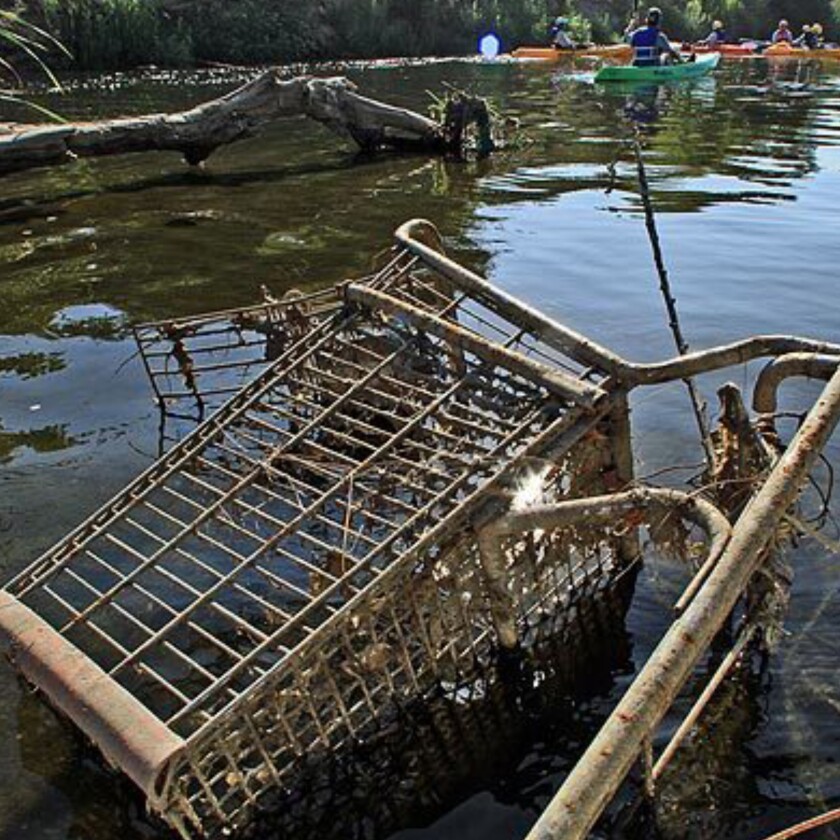
Help clean up sections of the L.A. River.
(Irfan Khan / Los Angeles Times)
1. Register for the Great L.A. River Cleanup and receive a free cleanup kit. The annual cleanup hosted by Friends of the L.A. River usually happens in April. But because of the COVID-19 pandemic, cleanups will be held in June and July at several locations along the river. Why sign up early? Those who register now will receive a cleanup starter kit, with trash bags, plant-based disposable gloves, maps of the L.A. River and a neck gaiter for free (while supplies last). Participants are asked to create their own DIY cleanups in small groups of family or friends. Besides river sites, cleanups are planned at Bull Creek in the Sepulveda Basin, Glendale Narrows Riverwalk, Compton Creek at Del Amo Metro Station and other places in need of volunteer love. At FoLAR’s website, you can find out more.

(Micah Fluellen / Los Angeles Times; Getty Images)
2. Where to moon bathe in L.A.? Let the L.A. Arboretum be your guide. The L.A. Arboretum has been hosting forest-bathing sessions for the last few years (no water required). Now, it will host a night event during the full moon on May 25 and 26 ($35, $25 for members). Whether you go for a day or night session, forest bathing is “the conscious and contemplative practice of being immersed in the sights, sounds and smells of the forest,” according to the Global Wellness Institute. Here’s more info on the Arboretum’s upcoming events.
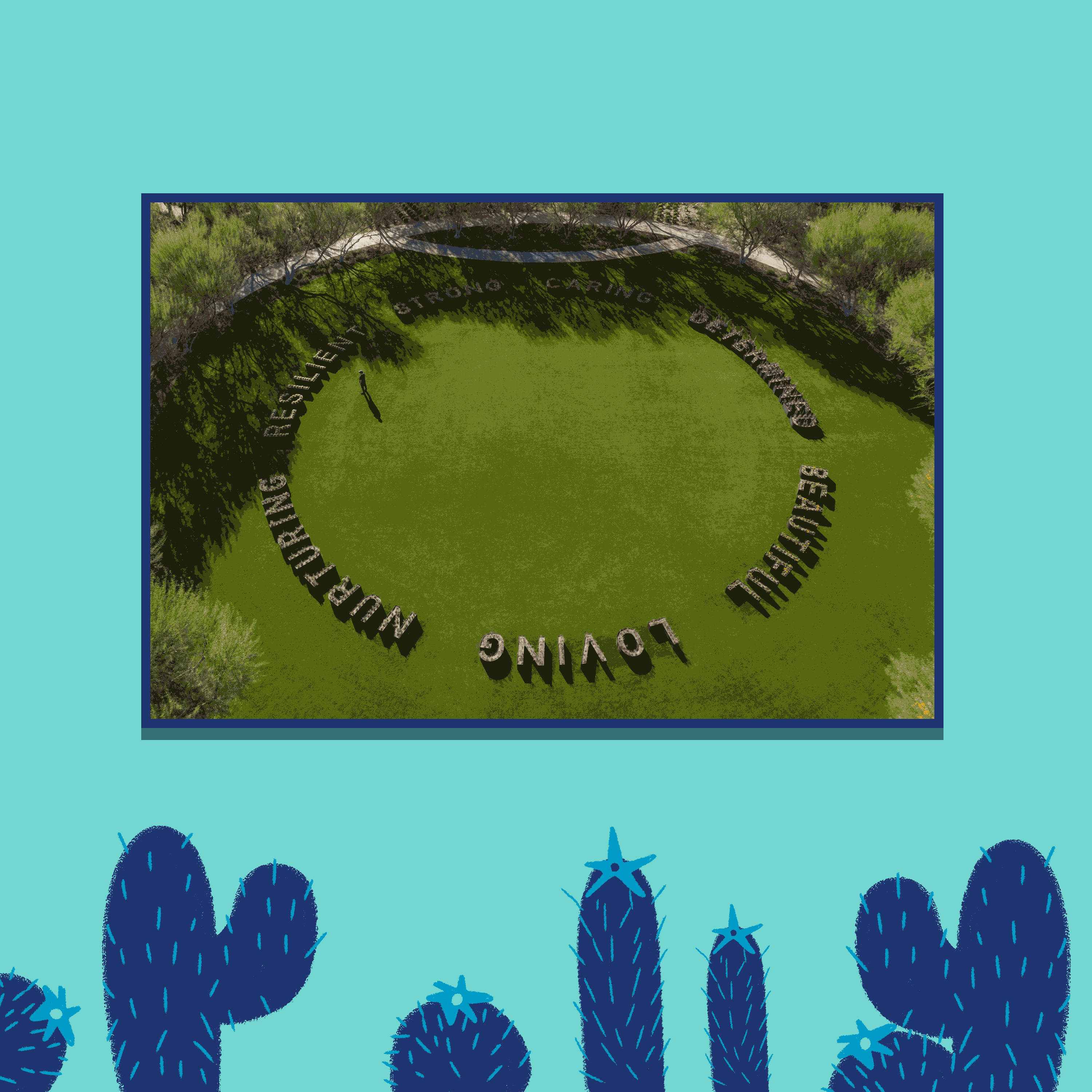
Art in the desert at Desert X.
(Micah Fluellen / Los Angeles Times; Lance Gerber)
3. Last chance to see contemporary art at Desert X 2021 in the Coachella Valley. The outdoor art show has an intriguing past, which goes like this (from the website): “The history of Desert X is short but mighty. It is an organization founded on the love of contemporary art and its ability to create cross-cultural dialogue while simultaneously engaging audiences and artists who find the walls of museums and galleries somewhat stifling.”
I like the idea of a wall-less art show in which the landscape matters as much as the works. The first show took place in 2017, then again in 2019. In 2020, Desert X helped with an exhibition in the Saudi Arabian desert. This year, 13 artworks are on display for anyone who visits the Coachella Valley; they’re easy to find with the Desert X app. The show ends May 16; it’s free and open to all. Here are details on where to go and what to see.
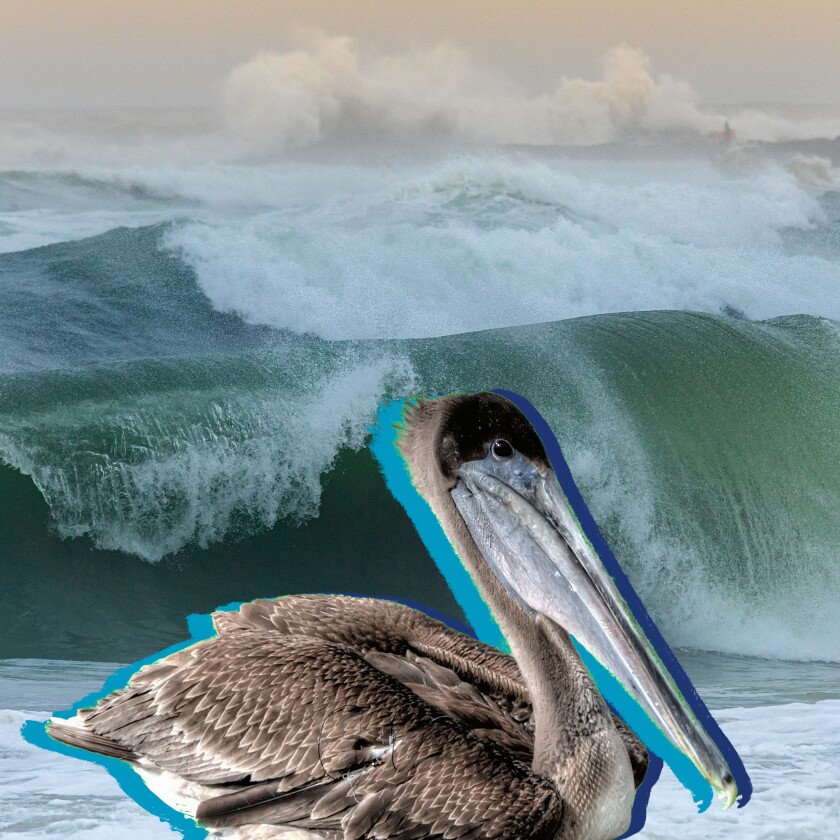
(Micah Fluellen / Los Angeles Times; Getty Images)
4. Watch brown pelicans glide. How do they do it? California’s brown pelicans are tough birds. Their numbers dwindled — first when their feathers were used for women’s hats in the late 19th century, then when fishermen targeted them as pests, and then when they were poisoned by deadly DDT. The pelicans were deemed endangered in 1970 and then rebounded to “recovered” status in 2009. Now UC San Diego scientists have discovered how pelicans perform that graceful, full-wing glide. Spoiler alert: They ride uplifts from the water’s surface: The bigger the wave, the bigger the lift, this story explains. Now you know.
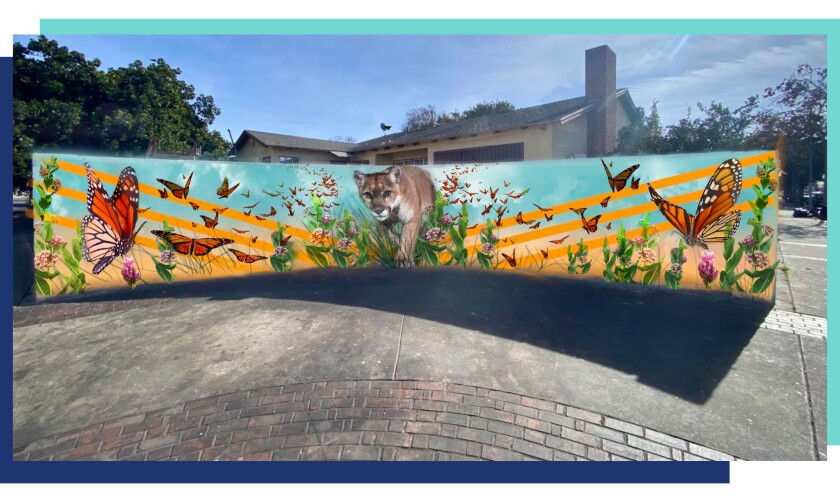
A rendering of the new P-22 mural in Watts.
(National Wildlife Federation)
5. Check out the new P-22 mural in Watts. What if Griffith Park’s P-22 mountain lion left the Hollywood Hills and slunk to the corner of Compton Avenue and Century Boulevard? It might look a little like this mural. The cougar seems to leap from the new wildlife work, surrounded by monarch butterflies and native plants. It was painted by Jonathan Martinez, an artist who earlier painted P-22 in a mural at Esperanza Elementary School in the Westlake area of Los Angeles. Mural viewing tip: Download the P-22 song “On the Move Again” for free while you gaze at the artwork sponsored by the National Wildlife Federation’s #SaveLACougars project and 3rd Rock Hip-Hop.
The red flag
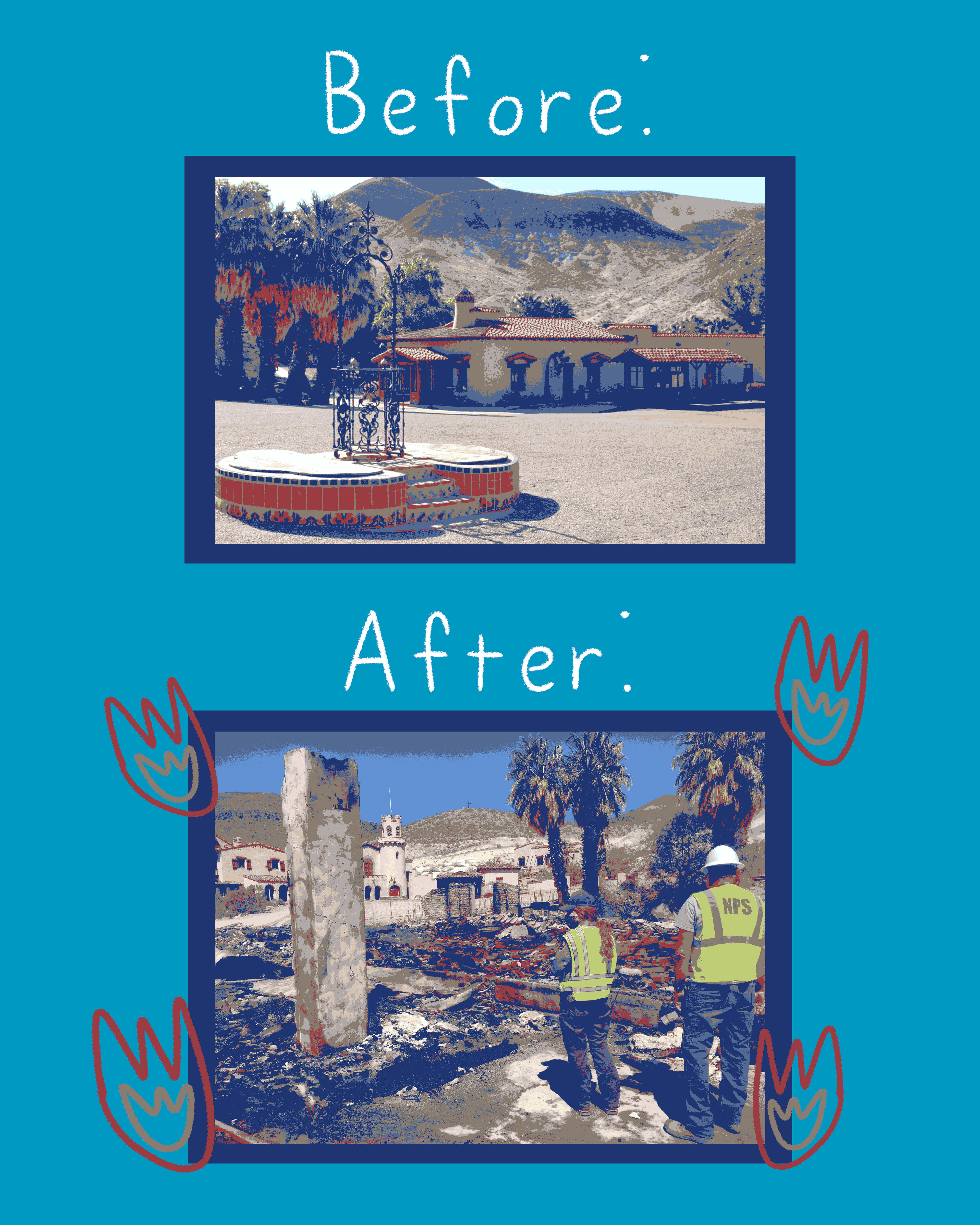
The garage at Scotty’s Castle in Death Valley, before and after the fire.
(National Park Service)
The 1920s-era Scotty’s Castle in Death Valley National Park can’t seem to get a break from disasters. On April 22, a fire destroyed the home’s garage and another building at the site. The cause is still under investigation, according to a park statement.
The Spanish Colonial-style house with a castle-like turret has been closed since 2015 after a flash flood swept through, ruining parts of the house, the garage and power poles. Damage to the site and the road was estimated at $47 million at the time. The onetime vacation home was built for Albert and Bessie Johnson and named for their friend Walter “Scotty” Scott, a gold miner. Park officials earlier said Scotty’s Castle might reopen in December 2022.
Wild things
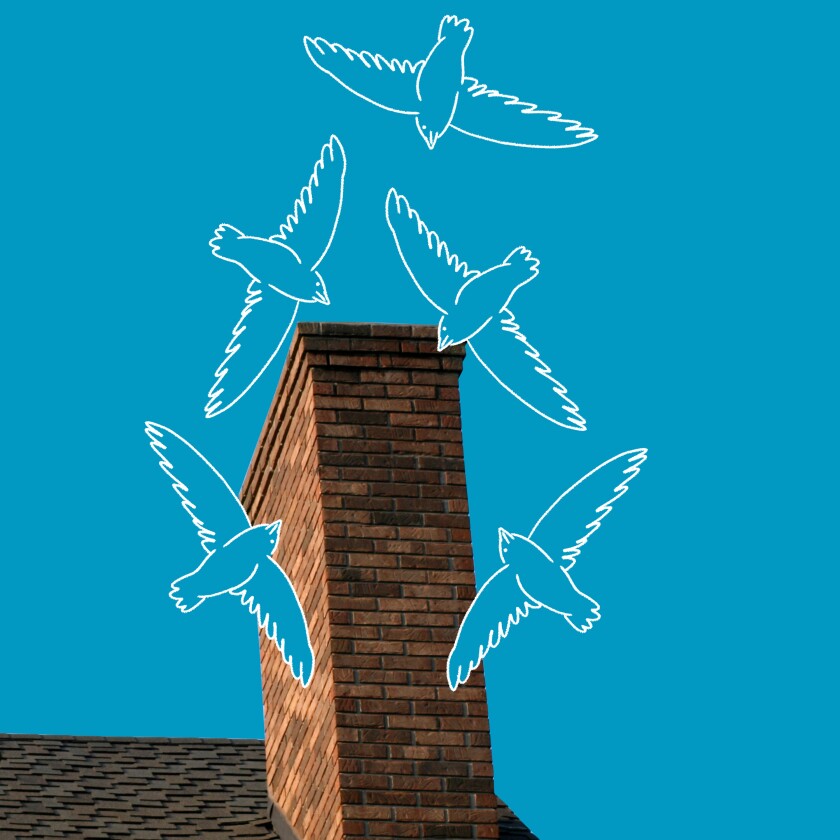
(Micah Fluellen / Los Angeles Times; Getty images)
Could hundreds of birds swoop into your home by plunging down the chimney? Absolutely.
On April 21, Vaux’s swifts invaded a home in Torrance, sending the family to a hotel until the little birds could be removed. Here’s video of the birds diving down the chimney and inside the home. And, yes, poop was everywhere.
The same thing happened in Montecito. This Montecito Fire Department video on Instagram shows some of the birds (there were about 1,000) trapped last month in the fireplace of a home. Once they flew in, they couldn’t get out. “County Animal Services worked diligently throughout the day to design a chute system to funnel the birds out of the fireplace and release them through the home’s back doors,” the post said.
The 4½-inch-long swifts start arriving in L.A. in early April, winging their way from Central America on a northbound migration to Washington and Oregon. Their numbers peak between April 25 and May 10.
“They often migrate in very large groups, in flocks of dozens to hundreds, sometimes even thousands, and during their migration, either for reasons of weather patterns or there’s food abundantly available, they may stick around in an area for days and days at a time,” said Kimball Garrett, ornithology collections manager at the Natural History Museum of Los Angeles County. They eat small insects such as baby spiders floating in the air and other “aerial plankton” while on the move, sometimes not stopping to sleep, Garrett said.
What’s with the chimney stop? “It’s really not something that’s unusual,” said Allison Schultz, assistant curator of ornithology at the museum. “Back in historic times, there would be hollowed-out trees where these swifts would be able to find refuge during their migration.... Hollowed-out trees are not an abundant landscape anymore, so they’ve had to resort to the next best, most similar thing: chimneys.”
A decade ago, thousands of swifts inundated the historic Chester Building in downtown Los Angeles. Viewing sites were set up so people could watch the spectacular gathering of swifts and learn about their journey.
If you don’t want to reenact Alfred Hitchcock’s “The Birds” in your living room, there’s a simple solution. “The best thing a homeowner or resident can do is have a cap over the chimney,” Guthrum Purdin, a veterinarian with the California Wildlife Center in Malibu, told The Times. “This allows smoke to exit but won’t allow animals to enter.”
For those who want to see the migrating swifts, try the north side of Elysian Park at dusk, where the 2 and 110 freeways intersect, Garrett said. In case you miss them, they’ll be back — southbound — from mid-September to mid-October.
The must read
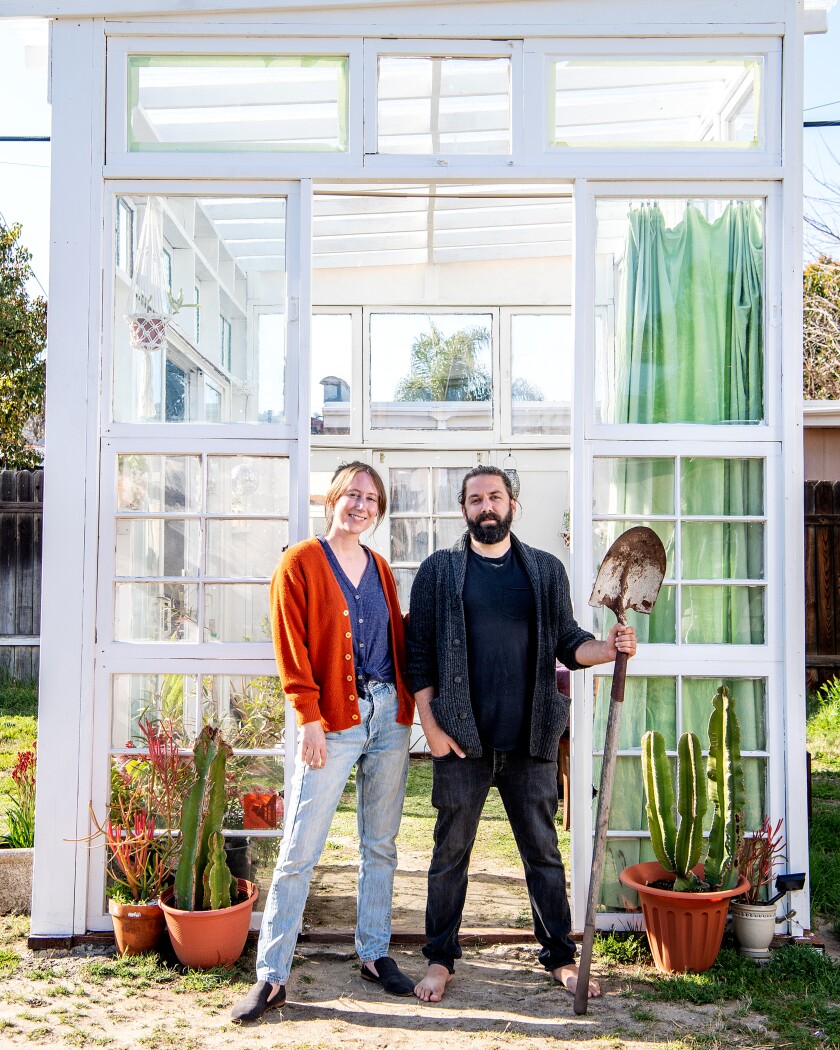
Jenny Grosso and Trevor Morris built a greenhouse using their neighbors’ discarded windows and doors.
(Mariah Tauger / Los Angeles Times)
Would you build a greenhouse using your neighbor’s cast-offs? That’s what Jennifer Grosso of Atwater did. She asked people for “any old windows or doors they’d like taken off their hands” on her Buy Nothing Facebook group. It worked. “Grosso and her boyfriend, Trevor Morris, collected more than 75 windows and doors over two months,” this L.A. Times story says. “They ended up using 41 of them to create the structure — 8 by 15 feet and 11 feet high — and saved 12 to build cold frames, bottomless boxes with a transparent cover to protect plants from the elements.” But it was the connections she made (carefully) with people during the pandemic that meant the most to her. Read the full story.
P.S.
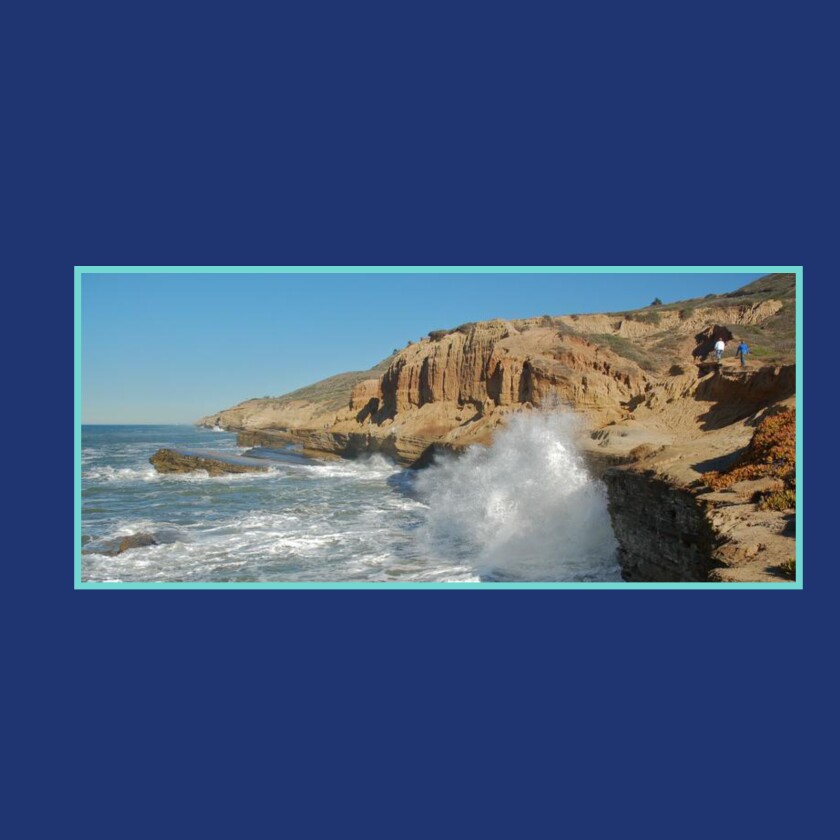
Cabrillo National Monument in San Diego.
(Micah Fluellen / Los Angeles Times; Los Angeles Times staff)
California has more national parks than any other state. During National Park Week, I suggested visiting one. Gary E. Davis reminds me there are 27 sites in the state operated by the National Park Service. “How about a little Park Week love for some of those other wild places — Mojave National Preserve, Cabrillo National Monument, Devils Postpile National Monument, Muir Woods National Monument, Lava Beds National Monument, Whiskeytown-Shasta-Trinity National Recreation Area, and our own backyard Santa Monica Mountains National Recreation Area?” Gary wrote in an email. “I understand your focus is on wild, but Park Week also includes celebrations of our multicultural society, and its history and art conserved in national park properties. Those historic parks often reveal the intimate interdependence of wild nature, human endeavors, and the health and wellbeing of both.”

(Los Angeles Times)
Want something new to wear on the trail this summer? Add a white, sun-reflecting bucket hat with The Wild logo to your hiking wardrobe. You can pick up a branded water bottle too. Click here to order.
Send us your thoughts
Share anything that’s on your mind. The Wild is written for you and delivered to your inbox for free. Drop us a line at TheWild@latimes.com.
Click to view the web version of this newsletter and share it with others, and sign up to have it sent weekly to your inbox. I’m Mary Forgione, and I write The Wild. I’ve been exploring trails and open spaces in Southern California for four decades.

from Lifestyle https://ift.tt/2SygvZa
via IFTTT

comment 0 Comment
more_vert